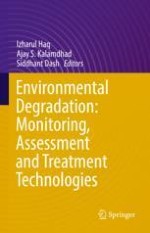2022 | OriginalPaper | Buchkapitel
3. Novel Rotating Disc Electrolytic Reactor based on Bipolar Electrochemistry for the Treatment of Industrial Wastewater
verfasst von : Narasamma Nippatla, Ligy Philip
Erschienen in: Environmental Degradation: Monitoring, Assessment and Treatment Technologies
Aktivieren Sie unsere intelligente Suche, um passende Fachinhalte oder Patente zu finden.
Wählen Sie Textabschnitte aus um mit Künstlicher Intelligenz passenden Patente zu finden. powered by
Markieren Sie Textabschnitte, um KI-gestützt weitere passende Inhalte zu finden. powered by
